
How to Start An Ecommerce Business
Australia’s ecommerce industry has been steadily growing year over year. According to Statista, between 2022 and 2027, the industry is projected to grow at a compound annual growth rate (CAGR) of 11.10% to US%76.5b by 2027.
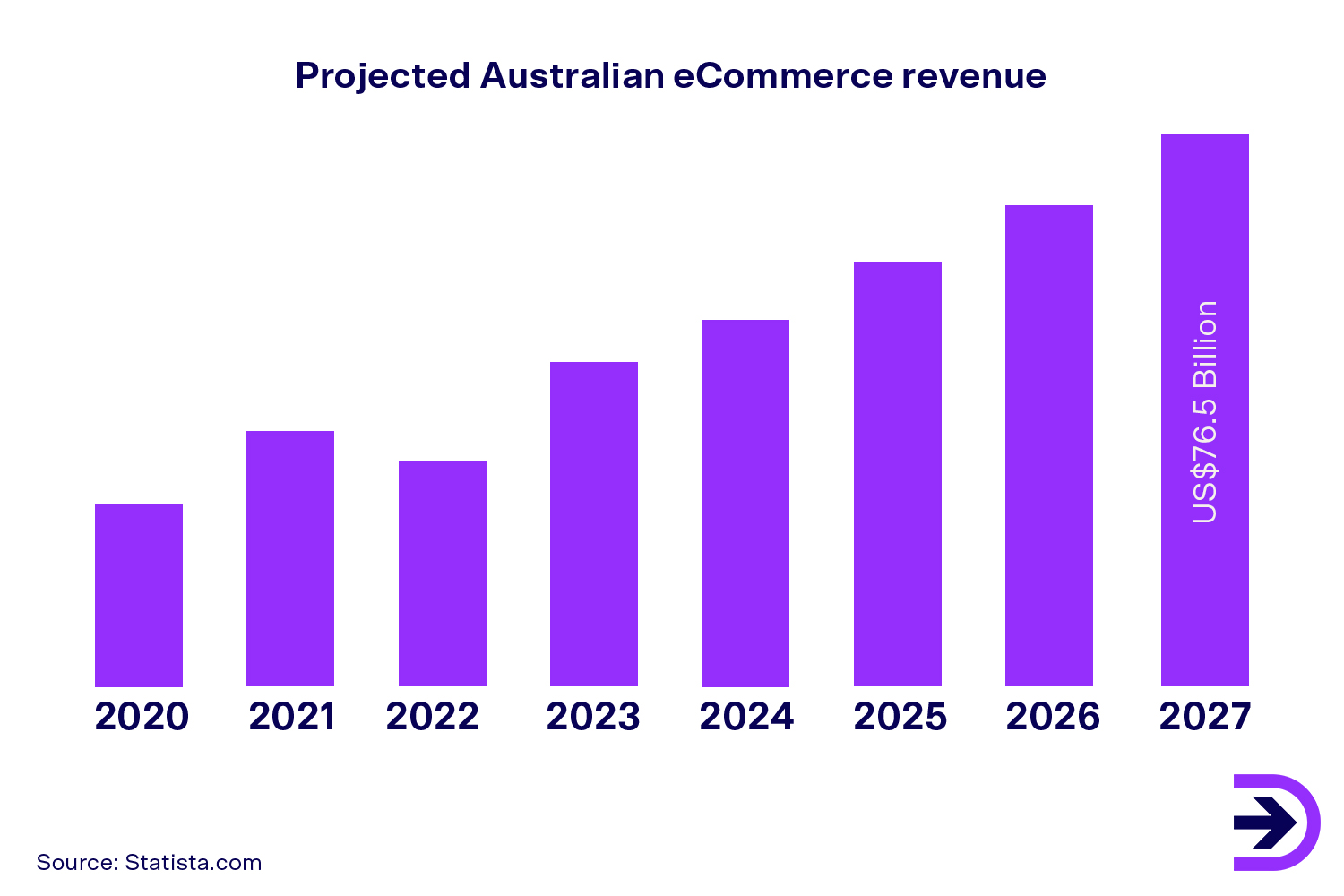
The growth of the ecommerce industry won’t stop anytime soon as Australians are increasingly adopting online shopping to meet their day-to-day needs. And thanks to COVID-19 more Aussies than ever have adapted to online shopping. With ecommerce becoming the new normal, there’s never been a better time to dip your toe in the ecommerce industry.
If you’ve decided to start an ecommerce business, you’re at the right place. We’ve put together a step-by-step guide to take you through its process and prerequisites. But first, let’s understand what an ecommerce business is in a true sense.
What is an ecommerce business?
An ecommerce business is an online business model where buying and selling goods take place over the internet. Sellers list their products online in their ecommerce stores to conduct business, perform marketing and sales activities, and oversee logistics and fulfilment. On the other hand, customers purchase products online listed in ecommerce stores, make online payments, and get their packages delivered to their doors. For example, Amazon is one of the most popular online stores in the ecommerce industry.
According to eMarketer’s Global Ecommerce Forecast 2022, worldwide retail and retail ecommerce spending is expected to stabilise in 2022 after two years of unpredictable circumstances and unusual growth patterns influenced by the COVID pandemic. And by 2025, total ecommerce spending will exceed $7 trillion despite a slower-growth environment. Due to the increasing popularity of online shopping, starting an ecommerce business becomes an obvious choice if you want to build your own business.

Do you need an established brick-and-mortar business to get started?
You’ve finally decided to start an ecommerce business after much quiet contemplation over your business idea. But you’re stuck because you don’t know if you’ll need an established brick-and-mortar store to get started. Building an ecommerce store is an incredible idea because it allows you to sell products to customers across the world, regardless of the distance and time zone. Many business owners and customers find ecommerce online stores more efficient than brick-and-mortar stores. It helps reduce the business's operational costs and develop better customer relationships.
An ecommerce business doesn’t require huge investments. You don’t need to have an established brick-and-mortar store or hire salespersons. You only need a digital presence and a proper plan to become a successful ecommerce business owner. Ecommerce businesses can be home-based as they don’t require many business licences and permits compared to physical stores.
How to start your ecommerce business
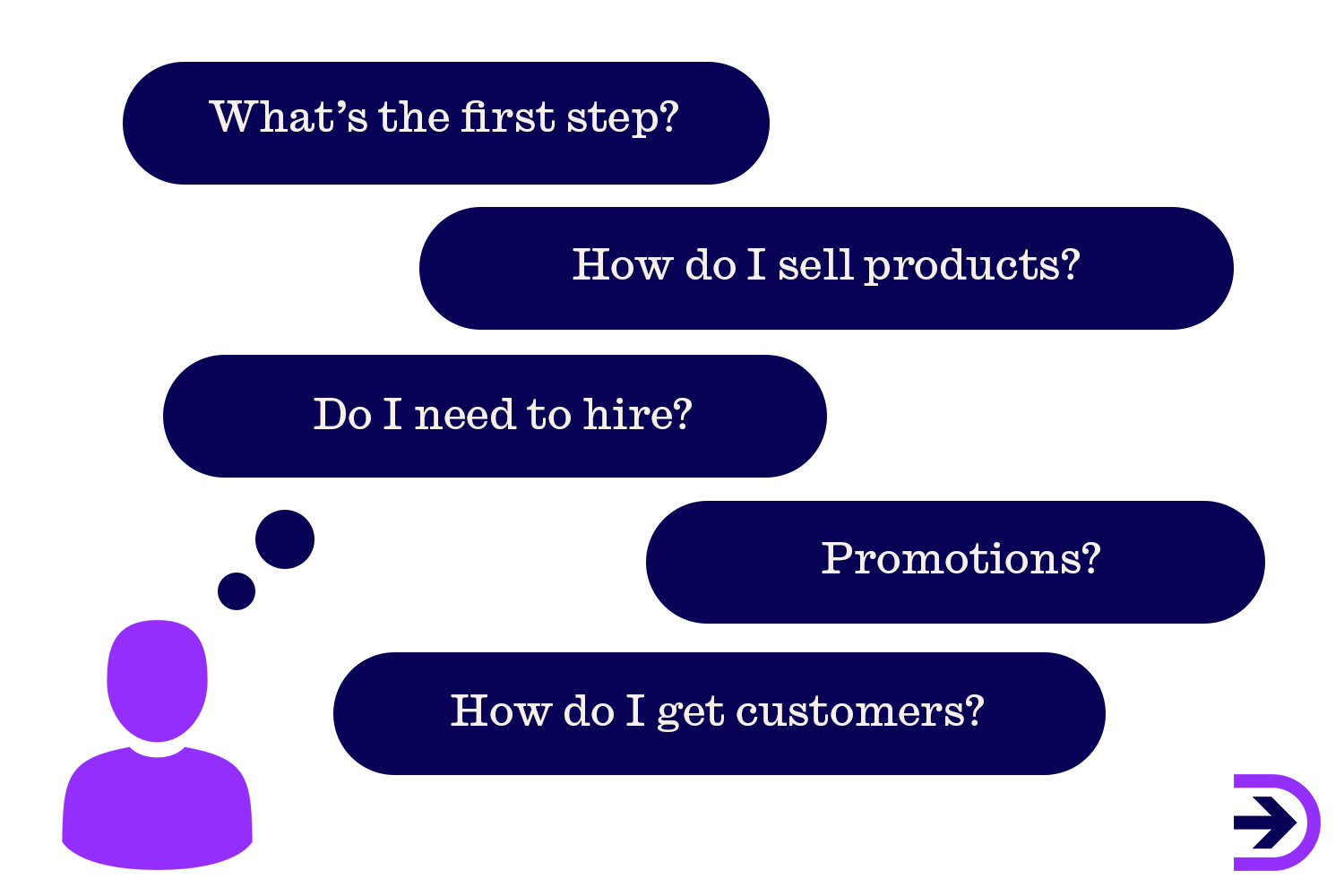
You’re finally ready to start an ecommerce store. It’s exciting but can quickly become overwhelming. What should be your first step? How do you sell products in your ecommerce store? Do you need to hire a professional to set up your ecommerce store? How do you promote your business? How to get your first customer? To help you ease your mind and stay organised, we’ve created a handy step-by-step guide to help you set up and launch your ecommerce store from scratch.
Deciding what to sell on your online business
No matter how long you’ve been in the ecommerce space, you'll face several challenges when launching an online business. And what’s even more challenging is finding trending and profitable products that will sell. The following are some practical ways to find products to sell in your online retail store.
Choose your niche
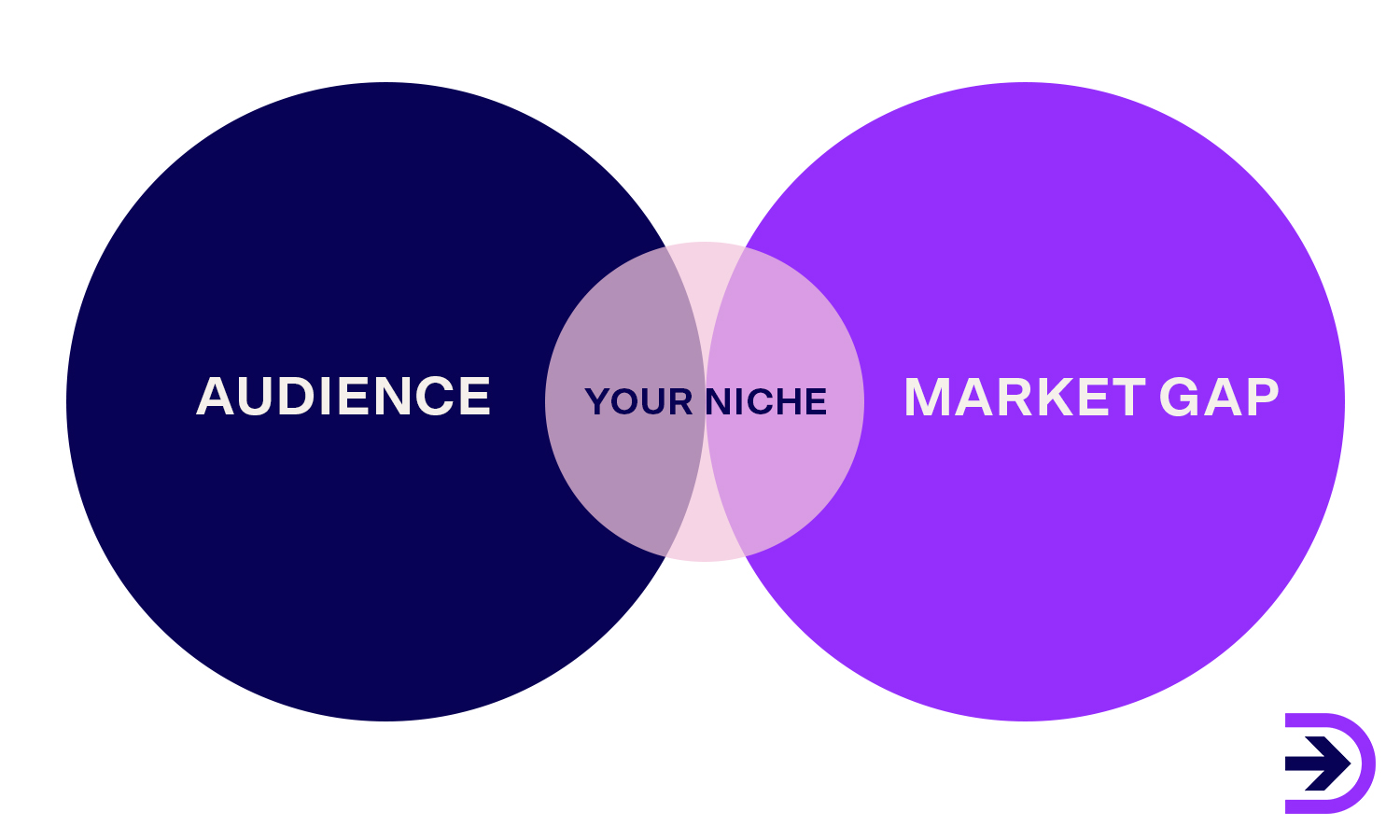
What works for others might not work for you. Conducting in-depth research is key to finding a potential niche. It can help you scale your business. When selecting an ecommerce niche, make sure it’s competitive. If there’s no competition, it could be a sign that there’s no market for that niche. But also avoid picking an ecommerce niche having a highly competitive market. Especially, you should skip those dominated by major brands. You can try using tools such as AnswerThePublic, Sell The Trend, Niche Scraper, and Thieve to discover hidden niches and unexpected insights. It helps eliminate guesswork and generate more ideas.
Brainstorm and select your products
Popular product categories naturally have more competitors and will be sold across more platforms. Hence, look for products with relatively low competition. This will help you stand out among your competitors and attract a niche-specific audience. Another tip, the key to finding profitable products to sell in your ecommerce store is to understand your customers, their needs, and desires. You want to select products that people from your inner circle need and use on a daily basis or are most likely to buy.
Identify your target market
Once you have chosen your niche and selected your products, your business will revolve around it. Then, start with building your target audience, considering the pain points your products solve, demographics, customer location, and other factors like hobbies, lifestyles, and passions.
Dropshipzone bonus tip: The expert Dropshipzone team has created a questionnaire to help you find great product ideas for your ecommerce store.
-
What pain points or problems do you wish to solve with your product?
-
What flaws or complaints do your target customers have with the current product in the market?
-
How could you improve your product to meet your target audience's needs?
-
What features are the most valuable to you?
-
How could your product be better than your competitors?
-
How would you rate the value for money?
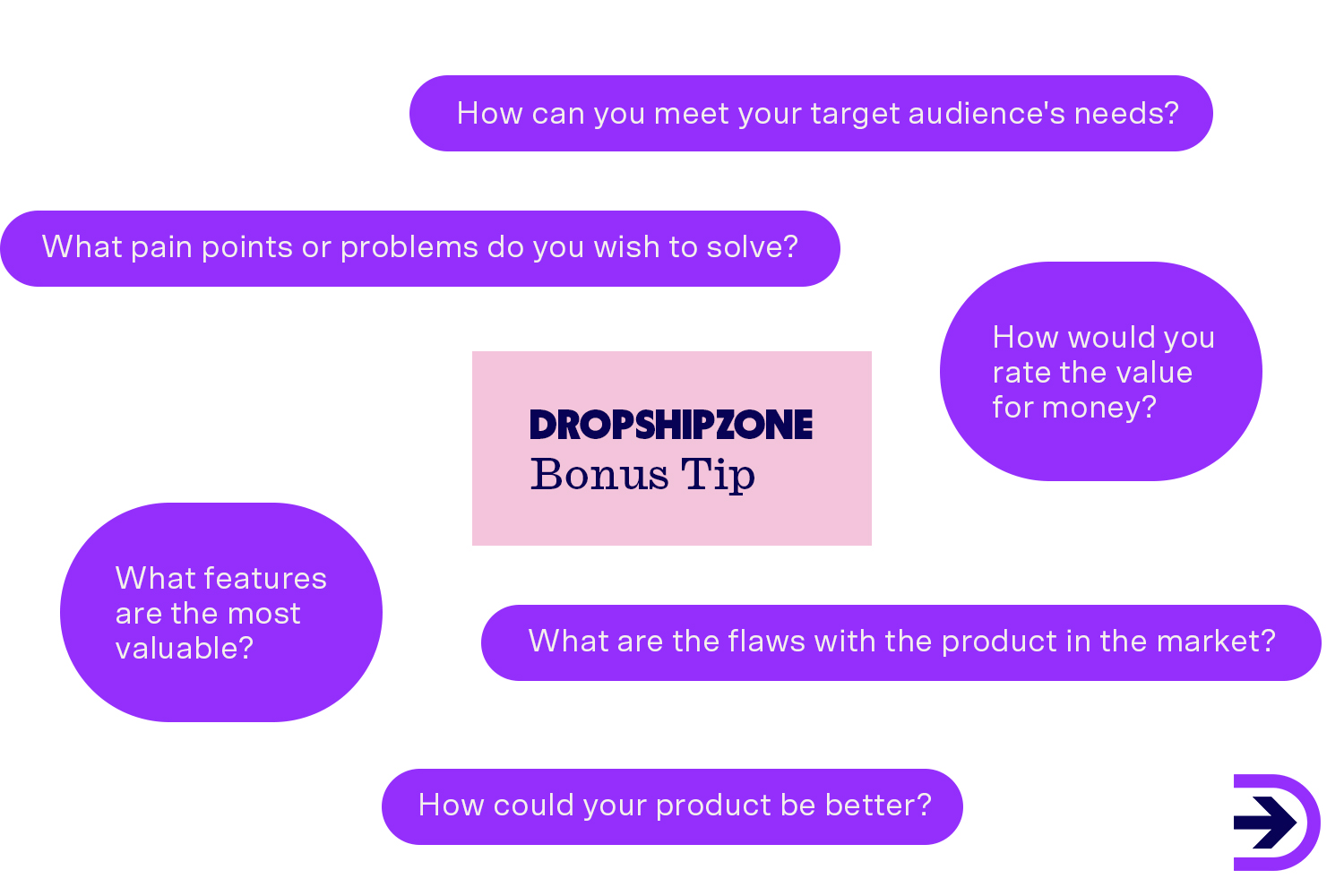
For more information on how to start an ecommerce business and find winning product ideas to sell, read our blog ‘Our top tips to find trending dropshipping products in 2022’.
Know your competitors
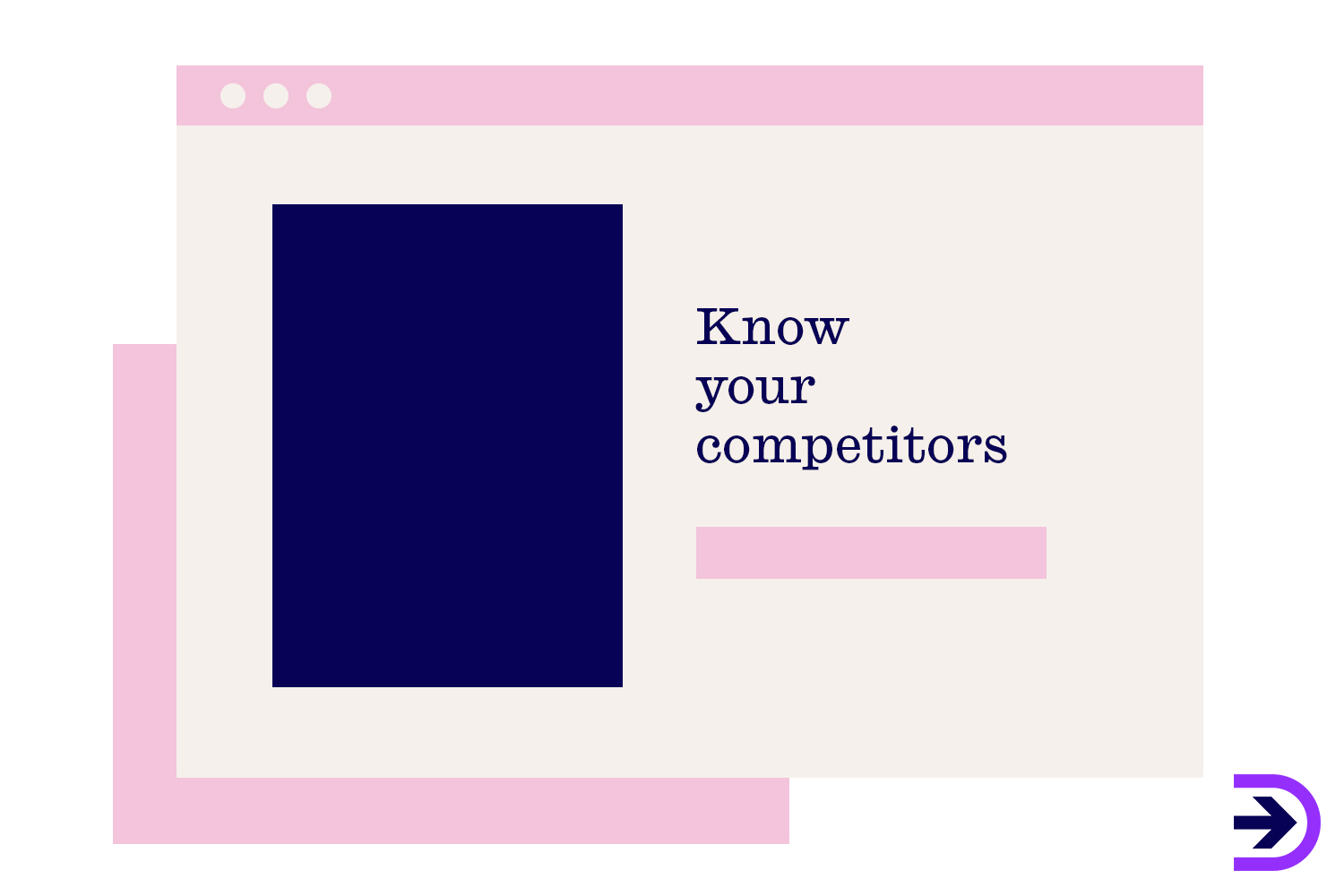
Your competitors are a great source for marketing ideas. And knowing them can provide you with valuable insights into how you can improve your marketing campaigns and present your products in a better way. Using automated or manual solutions, you can closely monitor your competitors to identify gaps in the market and develop a plan to help you stand out among your competitors. But what exactly do you need to monitor of your competitors?
The expert Dropshipzone team shares some tips on how you can monitor your competitors to enhance your own marketing efforts.
-
Develop a competitor analysis plan
-
Examine how they use branding to attract sales
-
Obtain updates on their performance
-
Analyse their SEO tactics
-
Scrutinise their social media sites to obtain marketing ideas
-
Research and analyse their strengths and weaknesses to identify gaps
-
Analyse the information obtained to understand the opportunities and threats
Constant scrutiny is vital to your success. You learn from the successes and failures of your competitors and know when they change their strategy to improve their marketing costs and the success of their advertising campaigns. Beyond your competitors’ products and marketing strategies, you should examine their community and the type of content their audiences engage with and look at what their audiences are saying about their products. Additionally, you should use available technological methods and tools to achieve your business goals.
Deciding where to sell your product - locally or globally
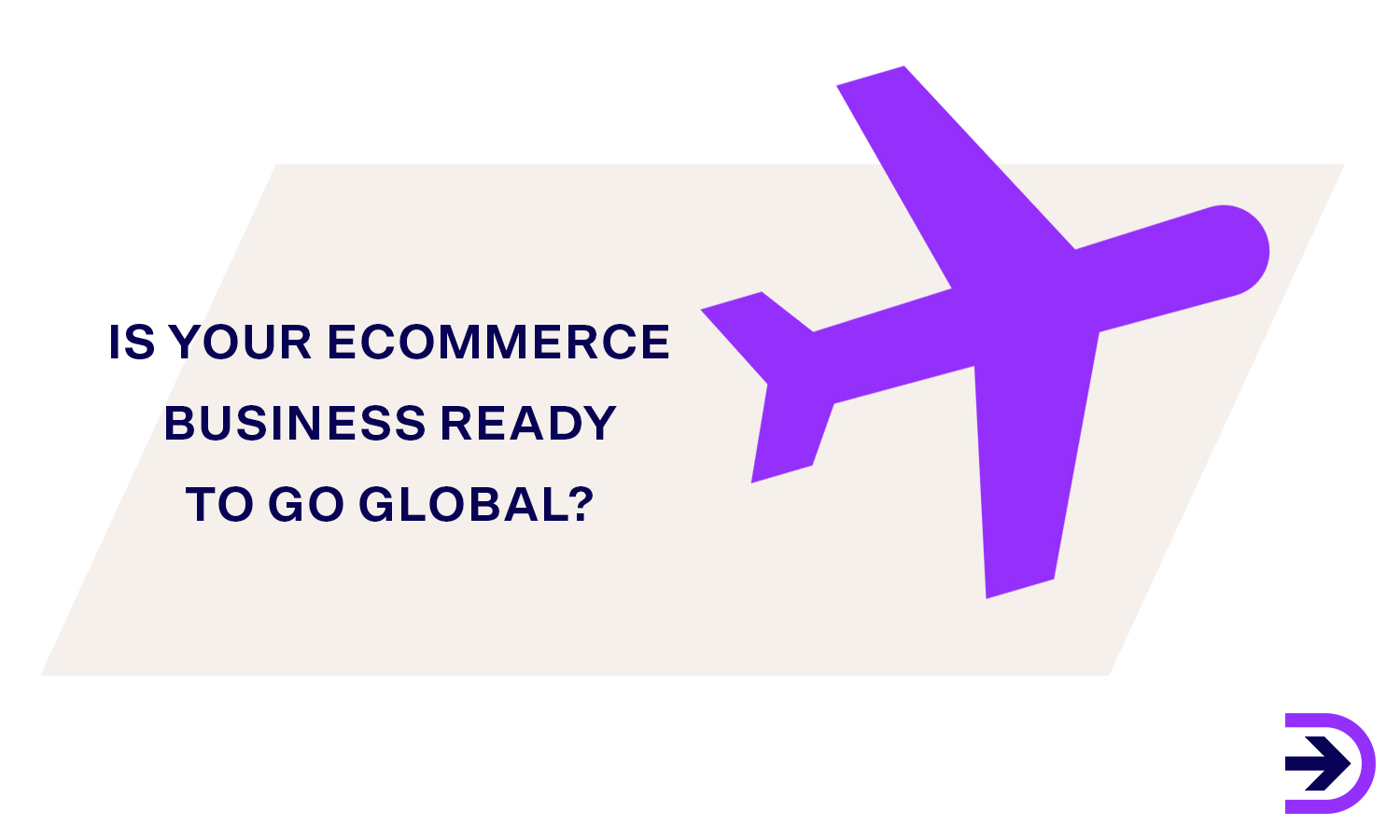
Are you thinking about expanding your ecommerce business internationally? As international shopping is becoming more accessible and convenient, retailers are taking their ecommerce businesses global, intending to sell products internationally and capture new customers. However, the only question is: Is your ecommerce business ready to go global? Selling products in different countries can come with risks and challenges that your ecommerce business will need to prepare for to overcome. These can include:
Language barriers
Selling your products online in a global market can present some communication barriers. If your customers have any concerns or questions about the product, you should be able to communicate with them effectively to resolve the issue.
Lengthy payment processing and shipping times
Selling your products in a global market could result in lengthy payment processing and shipping times. Payment processing can take several days, usually longer than initiating a local transaction. This can pose cash flow issues for your business, and your customers will have to wait longer to get products delivered as the items need to be shipped across borders.
Keeping up with different markets
You'll need to understand the socio-economic situation of the country you’re doing business in and keep track of any market changes. Failing to stay up-to-date with changes in market conditions could mean missing out on potential sales and decreased customer satisfaction.
Transaction fees and taxes
International payments are subject to payment processing fees and extra charges for currency exchange. Additionally, countries may impose taxes on imported products to protect their economies, and you may also have to pay customs processing fees for your products. It's best to stay mindful of all these things when selling products internationally to avoid surprises.
If you’re seriously considering selling your products internationally, you should assess the risk factors versus benefits and develop a strategy before you drop anchor in new waters.
Choosing your logo and business name
With the ecommerce industry becoming more competitive, you’ll have to stand out and create a unique brand identity to thrive in your niche. There are several factors that can help you run a successful ecommerce business, but having a well-designed logo can make a significant difference. It’s the most crucial element of your brand identity and can drive people’s attention and turn them into loyal customers.
All businesses have a logo and brand name, and it's the first thing a customer interacts with to know more about the brand. There goes a famous saying, “You never get a second chance to make a first impression.” According to psychological experiments conducted at the University of Amsterdam, 67 per cent of two-year-olds and older children were able to recognise the brand by the logo. For all these reasons, you should choose a brand logo and business name after careful consideration.

A business name and brand logo can’t be just anything you like. It should express what your business does and resonate with your target audience. As an ecommerce store owner, you should focus on creating a brand logo that’s easy to remember, increases recognition, and becomes a symbol of your business and products.
Tips for creating an impressive brand logo and business name
Know your target audience
When you’re starting your ecommerce business, you need to focus on fundamentals such as solving a problem or addressing a need in a different way to make your ecommerce store stand out. Additionally, you should be able to identify who will buy your products (your target audience). This gives you a good starting point to create targeted messaging to drive marketing and sales.
Dropshipzone expert tip: Create a buyer persona to know what your ideal customer looks like. It will help you picturise your customers and understand their needs and preferences.

Once you know your target audiences’ backgrounds, you’ll be able to target them by creating the perfect ecommerce logo that will resonate with them. You can even incorporate colours, fonts, and icons to convey a relevant message to your customers.
Look at your competitors’ logos
One of the ways to unearth the one-of-a-kind logo design for your brand is by researching your competitors. Learning about your competitors reaps incredible benefits as it can give you information that will boost your creativity. When you know what your competitors’ brands look and feel like, you can create a logo that will make your brand distinctive and set your brand apart from your competitors.
Dropshipzone expert tip: Don’t just assess your direct competitors but also your indirect competitors that offer a similar service or product to a different audience or demographic. It helps you know that you are giving your customers what they are looking for.
Simplicity and uniqueness
Designing a logo is one of the most complicated tasks for any brand or business. Customers usually take a fleeting glance at a logo when they’re scrolling through their feed. So you should design your logo in a way that will catch their attention. There are millions of brand logos in the world, good and bad. A good logo sums up all of your ideologies in one single graphic.
Dropshipzone expert tip: Keep the KISS ( Keep It Simple, Stupid) principle in mind when designing a logo for your ecommerce brand.
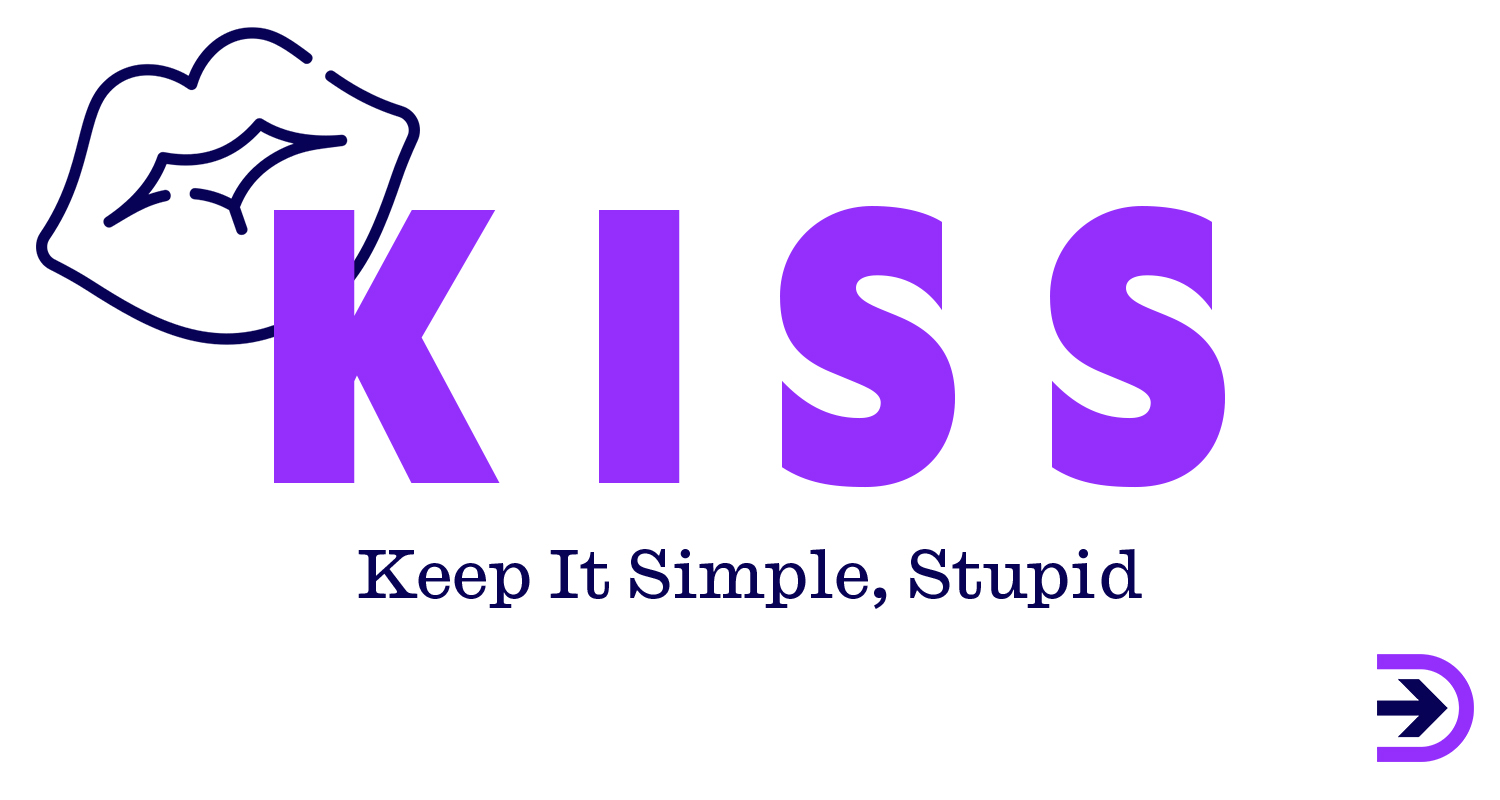
Logos with a simple design are recognisable and memorable and convey a clear message to the target audience. Such brand logos provide visual relief by cutting through the surrounding clutter. Nowadays, many brands are moving towards a cleaner logo design. If your messaging is cluttered and confused, your customers are less likely to engage with your brand.
For example, Starbucks has simplified its logo since its establishment in 1971. Initially, its logo included the entire siren image along with the text. As time passed, Starbucks incorporated a modern, clean picture by removing the text, cropping and modifying the image, and using a single colour.
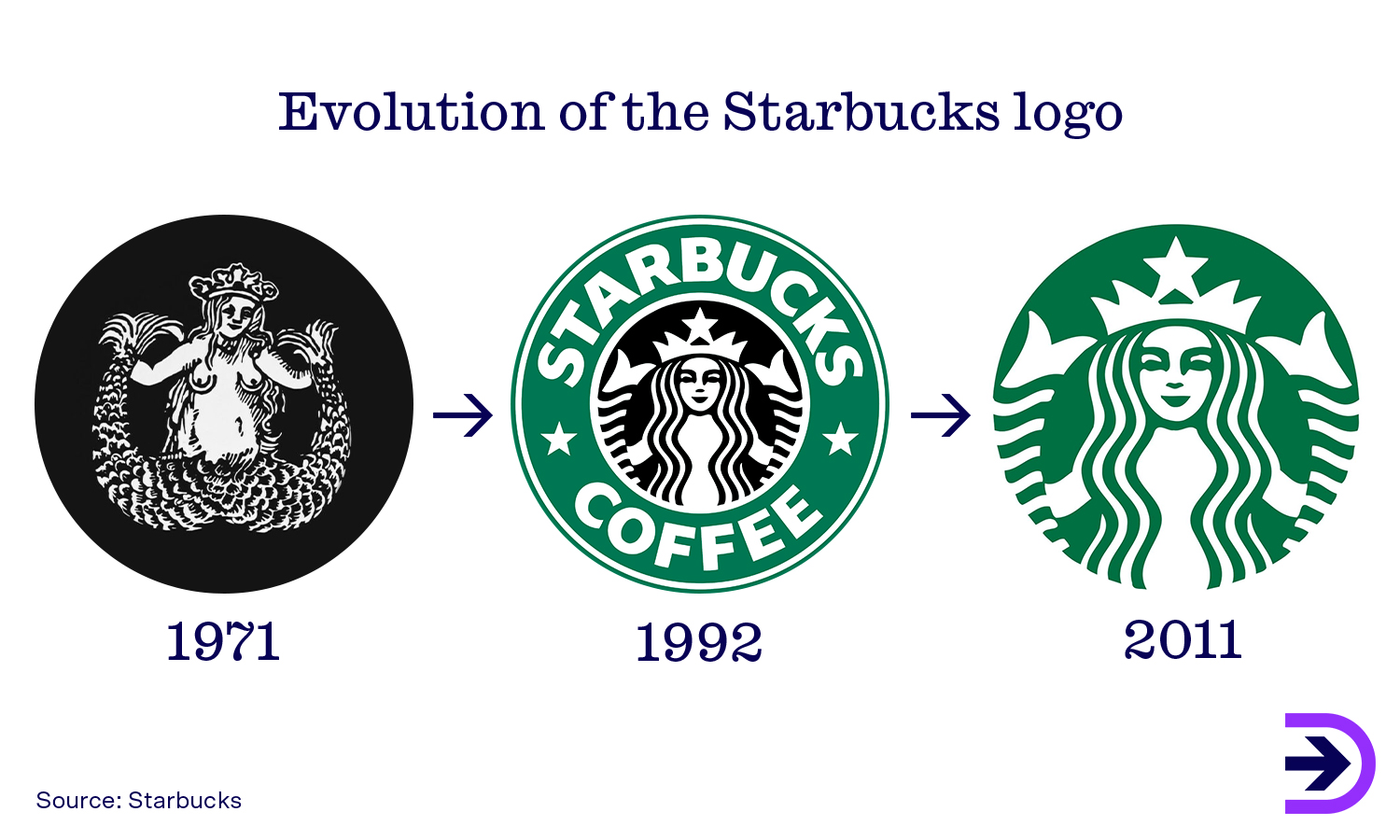
<h5 >Choose the right fonts and colours
A logo is the visual foundation of your brand identity. It effectively captures a complex image by simplifying your brand messaging and embodies the brand name and personality. While fonts add character and personality to your logo and convey brand messaging, colours have the power to portray emotions appropriately. So choosing the right font and colours for your logo will make your brand stand out among your competitors and invoke strong responses from your audiences.
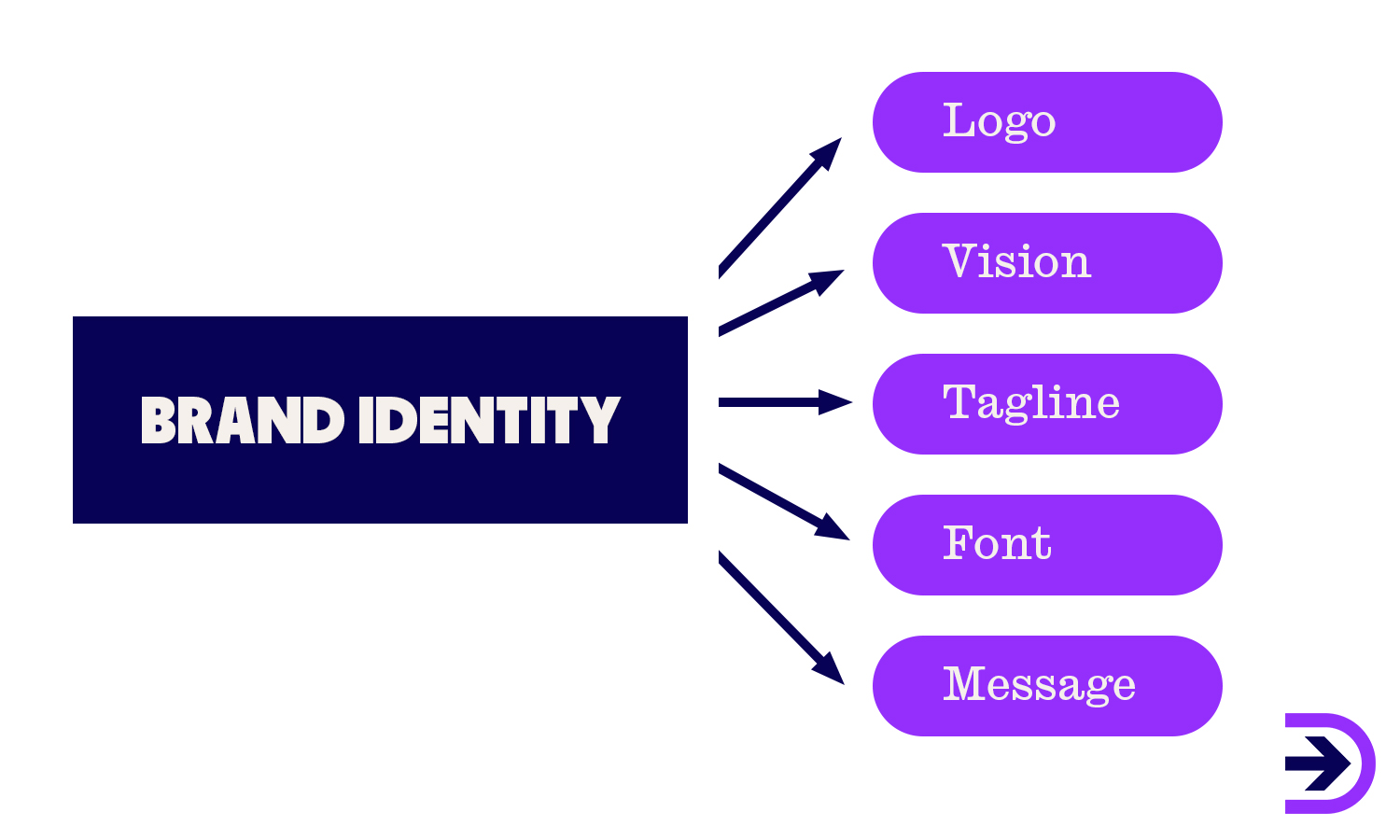
But choosing a font and colour that speaks to your brand is challenging because different colours and fonts convey different meanings. You’ll have to sift through the options and pick the ones that suit your business.
Dropshipzone expert tip: Avoid selecting multiple fonts and colours for your brand logo. It’s best to stick to a single colour and font. Keep in mind the less is more principle.
Get feedback and improvise
Though your logo is just a tiny part of your branding, it’s crucial for your business and should have a distinctive look. When you’re in an ecommerce business, collecting opinions and getting feedback from your friends, lookalike audiences, and industry experts is crucial for your business. It can help you gain valuable insights into things that matter to your business, which can serve as a guiding resource to improvise and design a better logo for your brand.
Selecting the right platform
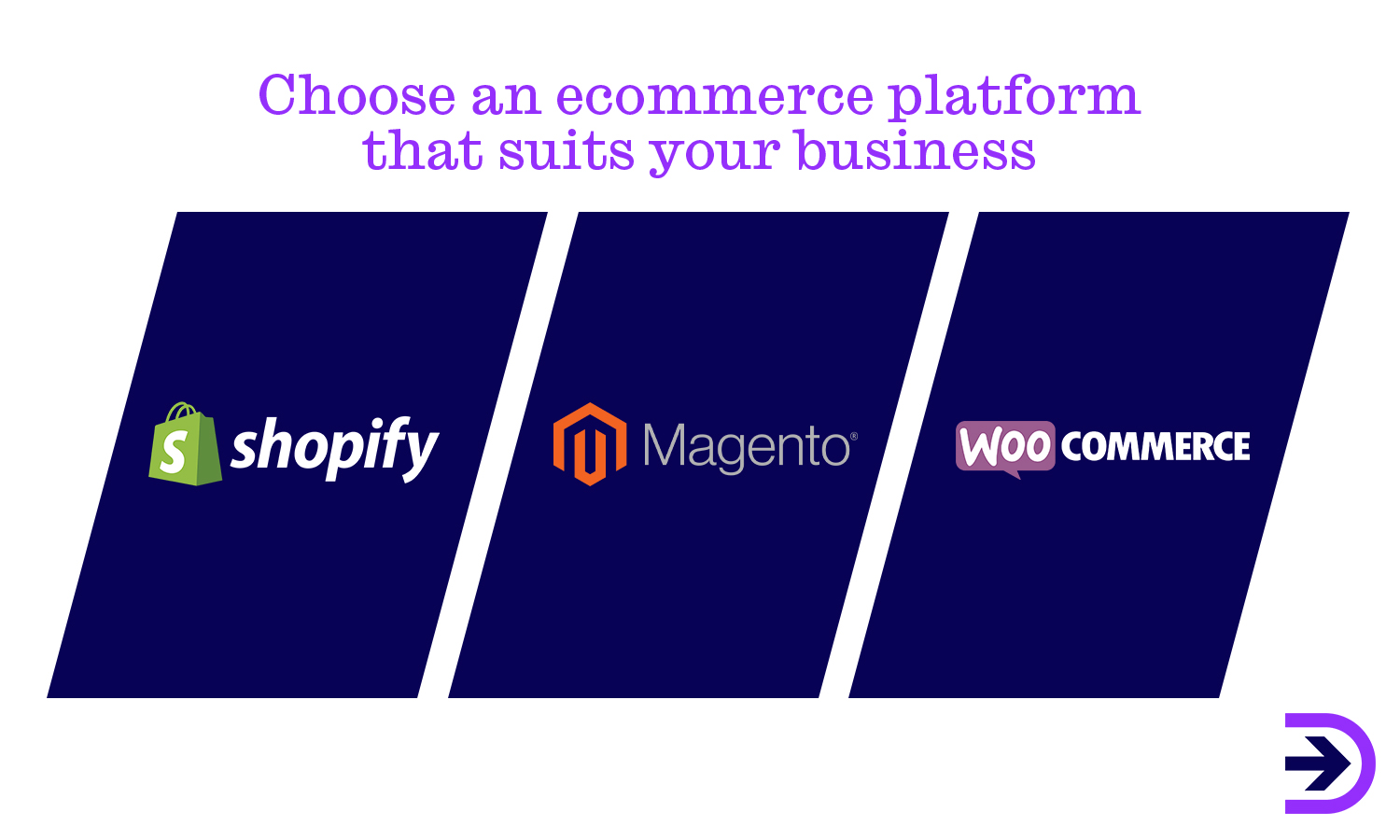
The first step of building an ecommerce store is choosing the right platform. You should select your ecommerce platform wisely because it’s the backbone of your business and can help you streamline your store to improve accessibility, provide a seamless user experience, and boost your sales. When selecting an ecommerce platform, you need to keep the following things in mind.
Self-hosted or hosted solutions
Self-hosted solutions require you to host your own website, whereas, with hosted solutions, your ecommerce platform will do it all for you. Whether you go for self-hosted or hosted solutions, each has its own pros and cons. Hosted solutions make an ideal option for non-technical users as everything from platform development to server maintenance is taken care of by the provider. On the other hand, hosted solutions give you no control over releasing features or other add-ons.
Integrations and plugins
Another factor you should consider is integrations and plugins. Ecommerce platforms, such as Shopify, come equipped with many different tools you will need to run your business. For instance, email marketing tools for customer engagement.
IT support
It’s not always sunshine and roses when running an ecommerce store. Inevitably, there will be times when servers crash and software outages. It can damage your brand and impact your revenue. In such events, you will need strong backing from an IT support team, which you can outsource, to overcome these challenges.
Supports business growth
When selecting an ecommerce platform, you should consider your potential business growth. Choose a scalable framework designed to help your business grow and handle increasing traffic. It will reduce the risk of troublesome downtime and improve your business efficiency.
Dropshipzone expert tip: If you’re starting out, you should opt for mainstream platforms like Shopify, Magento, and WooCommerce might work well.
Shopify is quite popular among new starters and established entrepreneurs for its flexibility and ease of use and is trusted by over one million businesses. The pricing is cost-effective, and it comes with in-built themes that are customisable and responsive. Shopify also provides 24/7 customer support by email, chat, and phone and offers other handy features, making it different from other ecommerce platforms.
Setting up your ecommerce store website
Now that you’ve selected a platform to launch your ecommerce store, it’s time to build and set up your ecommerce store. Picking a design for your ecommerce store is a crucial part of the process. You can’t simply choose a store design because it’s visually pleasing. You’ll have to research to find an ecommerce store design that will most likely work for your niche and the products you are offering to your customers.
You can get some inspiration for your ecommerce store design by spying on your competitors. Consider visiting their websites and look for the following things:
-
Do they use custom-designed homepages or traditional product listings?
-
How do they communicate a sense of urgency?
-
Do they use video to attract and engage their site’s visitors?
-
How are different products displayed on the ecommerce store website?
-
Is it just about the products or about people using the products?
We advise you to take plenty of notes, which you can refer to in the later stage when building your ecommerce website.
How to build an ecommerce store website
Are you preparing to launch your ecommerce store? Our experts at Dropshipzone have created a guide to build an ecommerce website that will walk you through everything you need to know so you can start selling your products online in the most hassle-free way.
Get a domain name
A domain name, also called a URL, is your web address that shoppers will enter into the browser to visit your website. Selecting the right domain name can make or break your business. It’s wise to pick a domain name that’s closely associated with what you’ll sell in your ecommerce store. You could include descriptive keywords or phrases in your domain name so that your customers know upfront what you sell. Additionally, it can help you rank in search engines.
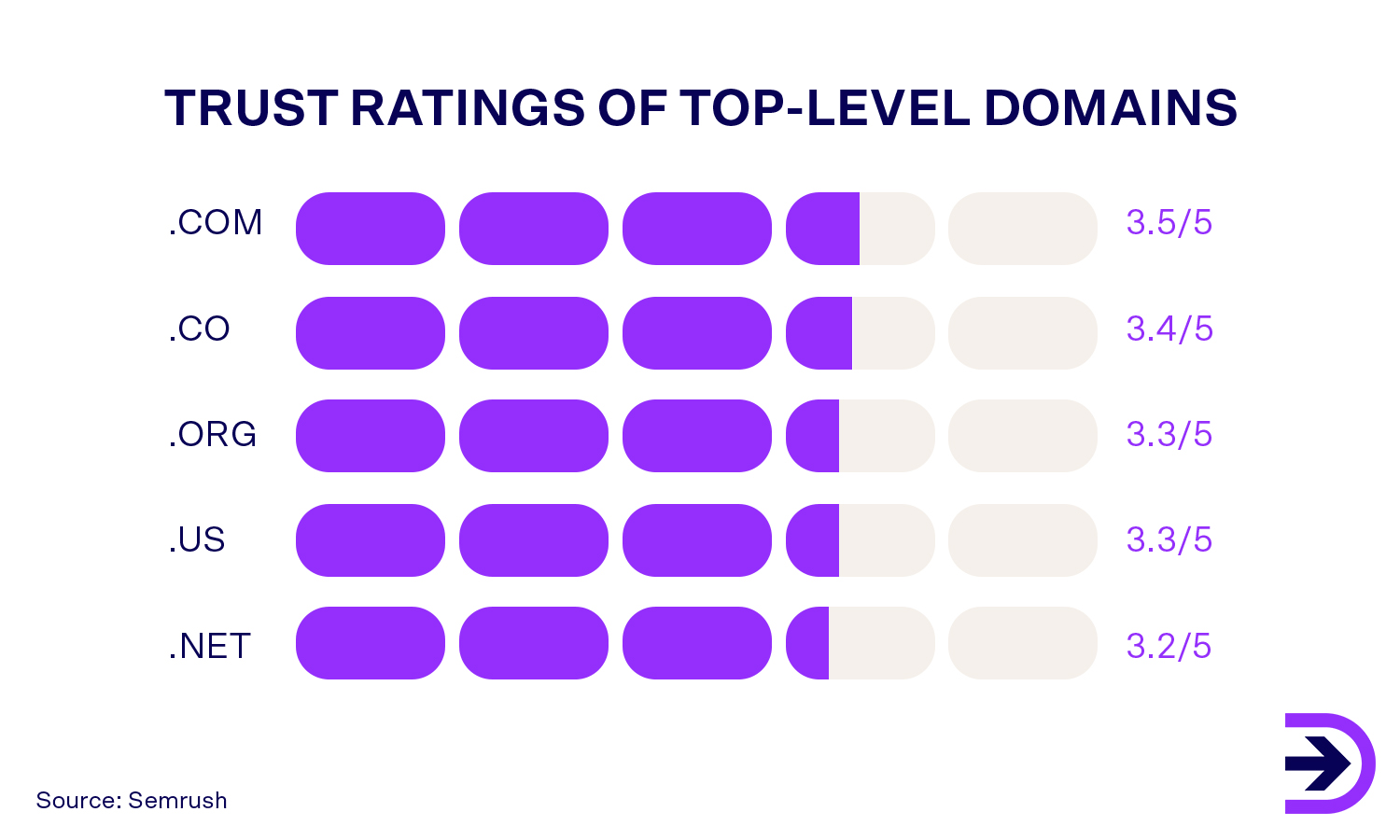
Sometimes, it can be hard to come up with a suitable domain name for your ecommerce store, especially in a saturated market. But there’s no scope for mistakes because changing the domain can later be a hassle. It could also hamper your brand and search rankings. If you already have a domain name, you can transfer it by following the domain transfer process.
Dropshipzone expert tips to get the right domain name for your ecommerce website:
Following are a few tips to get the right domain name for your ecommerce business.
-
Stick with the original generic top-level domains (gTLD) or country code top-level domains if possible, including ‘.com’ or ‘.com.au’. According to a survey conducted by GrowthBadger and published by SEMRush in 2021, this can help convey trust and authority.
-
Make sure your domain name is a reflection of your brand.
-
Avoid generic names. Make sure your domain name stands out.
-
Use domain name generators for unique ideas. Squarespace is a great starting point for a domain name search.
-
Refrain from using hyphens and double letters in your domain name.
-
Avoid creative names. Your domain name should be easy to remember.
-
Keep your domain name short. Ideally, it should be around 6-14 characters in length.
-
If your original idea is already taken, consider getting creative with newer top-level domains released since 2014, such as .xyz and .business, provided it relates to your business.
Are you wondering how to purchase a domain name for your ecommerce website? You can get a domain name using a domain registrar service like Bluehost, GoDaddy, or Google Domains. Visit one of these websites and enter your business name. It will tell you if your selected domain name is available, and if it's not available, it will suggest other alternate names. Depending on the service or any add-ons you choose, you can expect to pay around $20 to $50, excluding GST per year.
Select an ecommerce website theme or template
Ecommerce themes or templates are ready-to-use website pages that you can customise to suit your brand personality and the products you’re offering to your customers. All ecommerce platforms have tons of templates to choose from. So whether you are building your ecommerce website with Shopify, WordPress, Wix, or WooCommerce, you’ll have ready-made templates that you can use to set up your ecommerce store.

Themes make your website look good, and you can customise them without design and coding skills. Your ecommerce store’s look and feel can impact how your potential customers see your brand. An uninteresting website can drive visitors away in a few seconds. Therefore, you should design a website that captures your customer’s attention.
When you’re building your ecommerce website, you should choose a theme that matches your ecommerce website vision. Picking a suitable theme for your ecommerce store is crucial as it can enhance the look and feel of your store and encourage your visitors to make a purchase.
Dropshipzone expert tips for finding the best theme for your ecommerce website:
Here are the steps you should follow when selecting a theme for your website.
-
Research your competitors’ stores to understand what elements to include and things to avoid.
-
Consider including features like a simple checkout process, mobile-friendly design, fast loading times, customer navigation and guided search, cross-selling and up-selling, and compatibility with other apps and plugins for a seamless user experience.
-
Think about your content strategy and decide what content your website will display.
-
Make sure your brand elements work together harmoniously. Your theme’s colour should match your brand guidelines. A customer should be able to tell what type of business you are just by looking at your homepage. So make sure your theme communicates that clearly.
-
Ensure your CTA buttons stand out with clear copy so that you don’t miss the opportunity to convert your visitors.
Add products to your online store
No ecommerce store is complete without product listings. Once you’ve selected an ecommerce website theme for your online store, the next step is to create product pages and add products to your website. Product pages are among the most critical pages on your website. They show your customers what you have to sell. Make sure to display your products in a way that encourages your customers to make a purchase.
Dropshipzone’s checklist of things to include on your ecommerce website:
Here’s some crucial information you should put on your ecommerce store website.
-
Create detailed product descriptions that cover every detail of your product, such as who the product is for, how a customer should use this product, and when a customer should use this product. Use keywords in product titles and descriptions, wherever it makes sense, to rank well on search engines.
-
Images represent the perceived quality and value of the product, so include high-quality product images to engage the site visitors. Use vibrant photos to make images more appealing and keep the customers browsing. Ensure that all product images are the same size and add product variation images. You could also include real, authentic product videos. It can help boost customer engagement.
-
Make sure to include each product's size, weight, and material in the specifications section to help customers make purchase decisions.
-
Include FAQs so your customers can find answers to the most common questions related to the product.
-
If you offer product options in size and colour, consider including them under the same product. Ecommerce platforms allow you to create multiple variables for products with options.
-
Make sure you mention the correct pricing for the products to avoid disappointments among the customers in the later stage. Some ecommerce platforms allow you to put in single-item and group pricing and sale and discount pricing.
-
Create different product categories for different product categories to help customers find what they are looking for.
-
Use filters that allow your customers to sort through specific brands or price ranges.
Set up payment options
Once you have created product pages and added products to your online store, you should set up payment methods. Depending on the ecommerce platform you choose to build your ecommerce website, this step will vary. Some ecommerce platforms like Shopify and BigCommerce come complete with built-in payment processing, while others require integrating different tools to handle these tasks.
While setting up your payment methods, you should ensure that the payment method is not complicated and reliable. Make sure your payment methods are PCI compliant and secure. It ensures that all the details are kept safe. Any discrepancies could cause cart abandonment, loss of trust, and even heavy fines and lawsuits.
Consider offering multiple online payment options to your customers, especially if you’re a small business. This is a great way to expand your customer base, attract customers from different demographics, and boost conversions. Here are a few of the most common and secure payment methods in the Aussie market.
-
Paypal
-
Google Pay
-
Apple Pay
-
Openpay
-
Klarna
-
Zip Pay
-
Credit/Debit Card
-
Afterpay
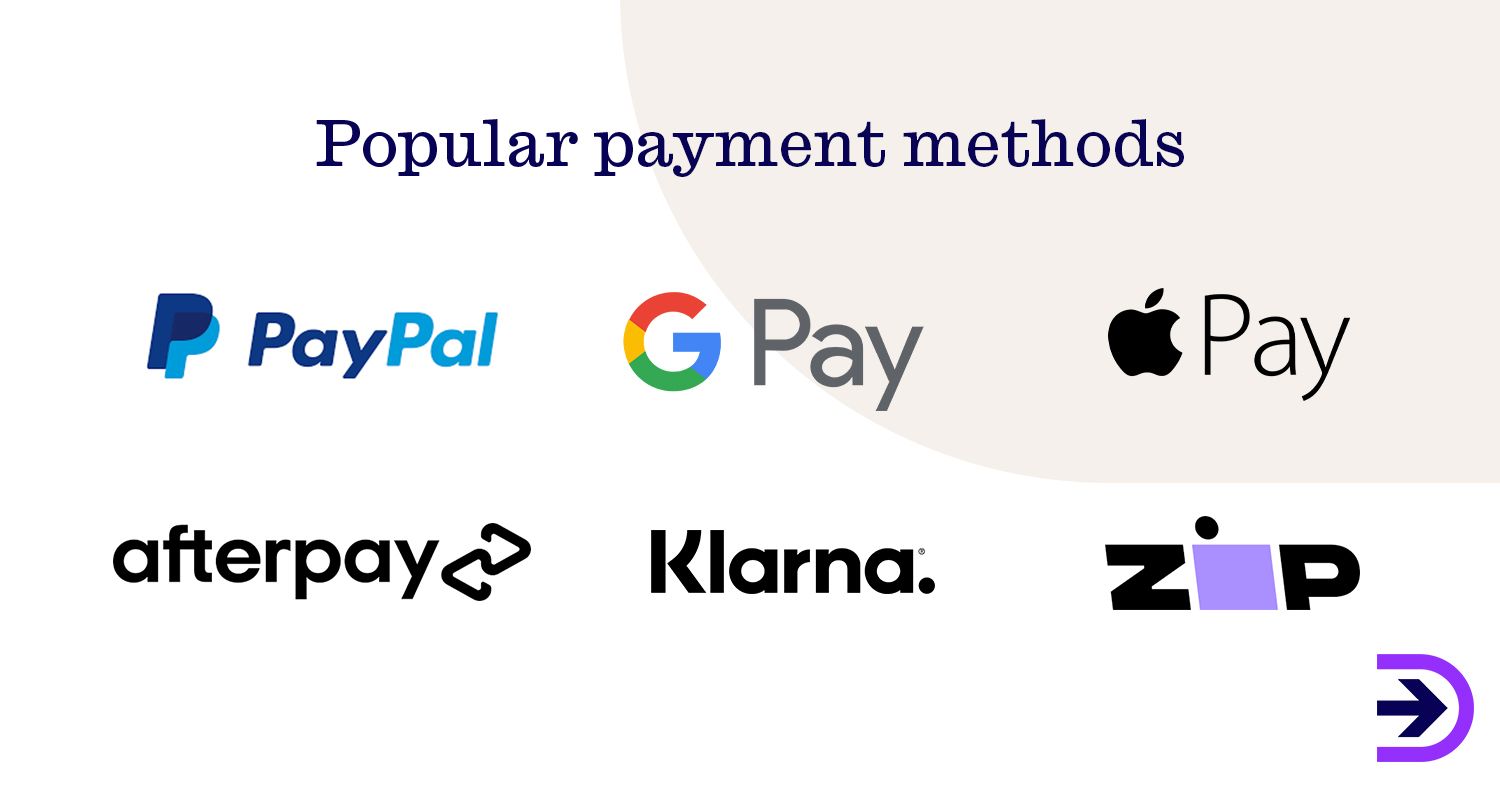
Sort out your ecommerce shipping strategy
After setting up your payment methods, the next crucial step is to sort out your ecommerce shipping. Ecommerce shipping includes everything from receiving and processing the order to packing and shipping it to the customer’s address. When setting up your ecommerce shipping strategy, you should be mindful of two important things - your shipping fees and your shipping solution.
Determine your shipping fees
There are three most common shipping strategies - free shipping, flat rate shipping, and variable rate shipping. Free shipping is popular among shoppers because it offers the convenience of purchasing an item online and paying the same amount they would pay in store. However, sometimes there's a trade-off between free shipping and fast shipping. Determine which shipping pricing strategy, including shipping costs, are appropriate for you to handle at this stage, depending on your level of sophistication.
Preview and launch your ecommerce store
Now that you’re all done setting up your store, you should consider previewing before launching to the public. Previewing your online store will help you make a powerful first impression and enable you to provide a smooth user experience when you launch your business. Have a final look at your brand elements, home page, product page, and other website pages to ensure everything is on-brand and functional. Remember, building a website isn’t a one-time job. You should keep working on your online business to make it better.
Understanding shipping and order fulfilment costs
The next critical part of starting an ecommerce business is understanding shipping and order fulfilment costs. When running an ecommerce business, shipping costs are a big differentiator. There are several factors that influence shipping costs, and understanding these factors will help you cut down on those costs, increase conversions, and improve your profitability. Let’s discuss some of these factors.
Weight and size of products
The weight and size of the products could influence the shipping costs. A heavier package but smaller in size may or may not cost you more than a lighter but larger package. However, it all depends on the carrier you choose. Weighing each product you sell will help you get a good sense of total shipping costs and enable you to pass accurate prices to your customers. This will significantly reduce bounce rates and help you build valuable customer relationships.
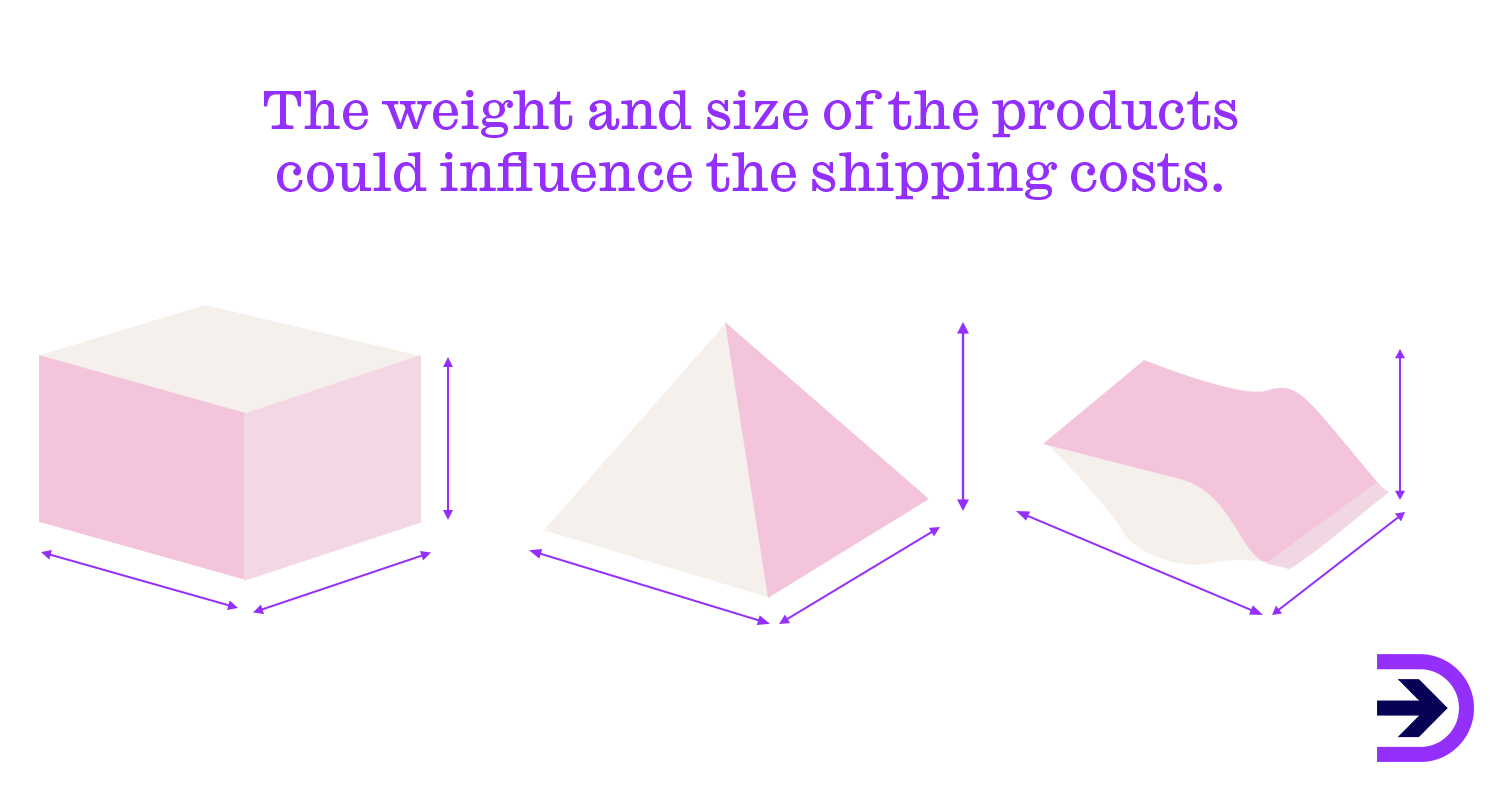
Packaging materials
Different products need different kinds of packaging. Some fragile products may need extra padding to prevent damage during shipping. Such custom packaging materials can also influence shipping costs. Some common packaging materials include plastic, wood crates, paperboard boxes, plastic boxes, and durable glass packaging. Packaging materials vary in size and weight, which helps explain the differences in shipping and order fulfilment costs.
Time and resources required
Fulfilling orders and shipping products to your customers requires time and resources, which could increase your expenses. You'll have to deliver products to your preferred carrier or have them picked up. Additionally, you will need to create labels, place products in the boxes, and seal them. You will also need someone to manage this work.
Total distance from the destination
Distance is also a vital factor that affects shipping costs. The further away from the destination, the higher the shipping price. Establishing your warehouses close to your target audience’s location might significantly reduce the shipping price.
Delivery speed
How fast you want your products to reach customers could also influence the shipping price. Same-day delivery or overnight delivery methods are expensive. Established ecommerce companies, such as Amazon, are set up to handle the costs associated with fast dispatch and delivery. It can be challenging and costly for emerging or smaller businesses to operate at the same speed.
Shipping surcharges
A shipping surcharge is an additional fee added to your shipping cost by the carrier. It involves miscellaneous expenses, such as weekend shipping charges, handling fees, area-specific charges for hard-to-access areas, and fuel surcharges. All of these factors could also result in increased shipping fees.
Selecting the right business model
Each ecommerce business is unique and has its own needs and goals. There’s no one ecommerce business model that will suit all businesses. But before we dive into which business model could be the best for your ecommerce business, let’s get a clear understanding of the different product sourcing methods for your online ecommerce business.
Making the products
Keen to become a maker? Then, here’s some good news! Making your own products can be an impressive start for many hobbyists dreaming of starting their own businesses. It can also result in a profitable business. However, it takes time and can result in higher prices of the goods sold. This can limit your business' scaling abilities.
Manufacturing
Manufacturing is a challenging product sourcing method and requires upfront financial investment. You will often need high minimum order quantities to start the production process. Hence, it’s a time-consuming process and would usually take months. You'll also need to sort the warehousing, product delivery, and shipping.
Purchasing wholesale
Purchasing products wholesale could be considered a middle ground between manufacturing and dropshipping. The profit margins are comparatively better, anywhere between 20% to 50%. However, it still carries risk and requires much effort in proper planning and strategy development to differentiate yourself from other retailers selling the same products. Also, most wholesalers have a minimum order quantity you need to meet.
Dropshipping
Dropshipping is a smart way to source products where you don’t have to worry about fulfilment and shipping. Everything is taken care of by the supplier. Another benefit is that you don’t have to pay for the products until your customer pays for their products. This makes it easier to start and offers a fantastic opportunity for professionals and novices to run their own online retail store. Learn more about dropshipping here.
Which business model should you choose - Private Label vs Dropshipping
Usually, retailers - both online and physical store owners - source their products from suppliers and manufacturers to sell in their stores. The products come with the manufacturer’s branding and packaging, which means retailers have no control over the products’ packaging and branding.
Nowadays, private labelling is also growing in popularity. This business model may sound new to you if you have just started learning about dropshipping. As the name suggests, a private label product is one that a retailer gets manufactured by a third party and then sells it under its own name. The best example of this is Woolworths’ Select brand. With private labelling, retailers can get the products manufactured according to their specifications, including logo, packaging, and overall design. Now, let’s discuss the advantages and disadvantages of private labelling.

Advantages of private labelling:
-
Complete control over products’ branding and packaging
-
Control over production costs to ensure the most profitable pricing
-
Potential for better profit margins
-
Opportunity to build a strong brand and create an exclusive identity
-
Less competition
Disadvantages of private labelling:
-
Need to rely on a manufacturer to create products
-
Difficulty building brand loyalty
-
Needs upfront investment
-
Higher startup costs
-
Need to meet minimum order requirements
Private labelling is best suited for:
-
Businesses that do well in the market and have high brand recognition
-
Sellers who want to create their own brand
-
Sellers who want to establish an online business and sell their own products
On the other hand, dropshipping is a business model that enables entrepreneurs to start an online business without manufacturing products, holding inventory, or delivering products to customers. In simple words, dropshipping can be a type of ecommerce business where you take orders on your own website, and your dropshipping supplier ships the products to the customers, eliminating the need for you to hold the inventory and ship the goods to customers. Many people consider dropshipping an easy way to do business. Online retailers can scale relatively easily and quickly without significant upfront investment. Now, let’s take a look at the advantages and disadvantages of dropshipping.
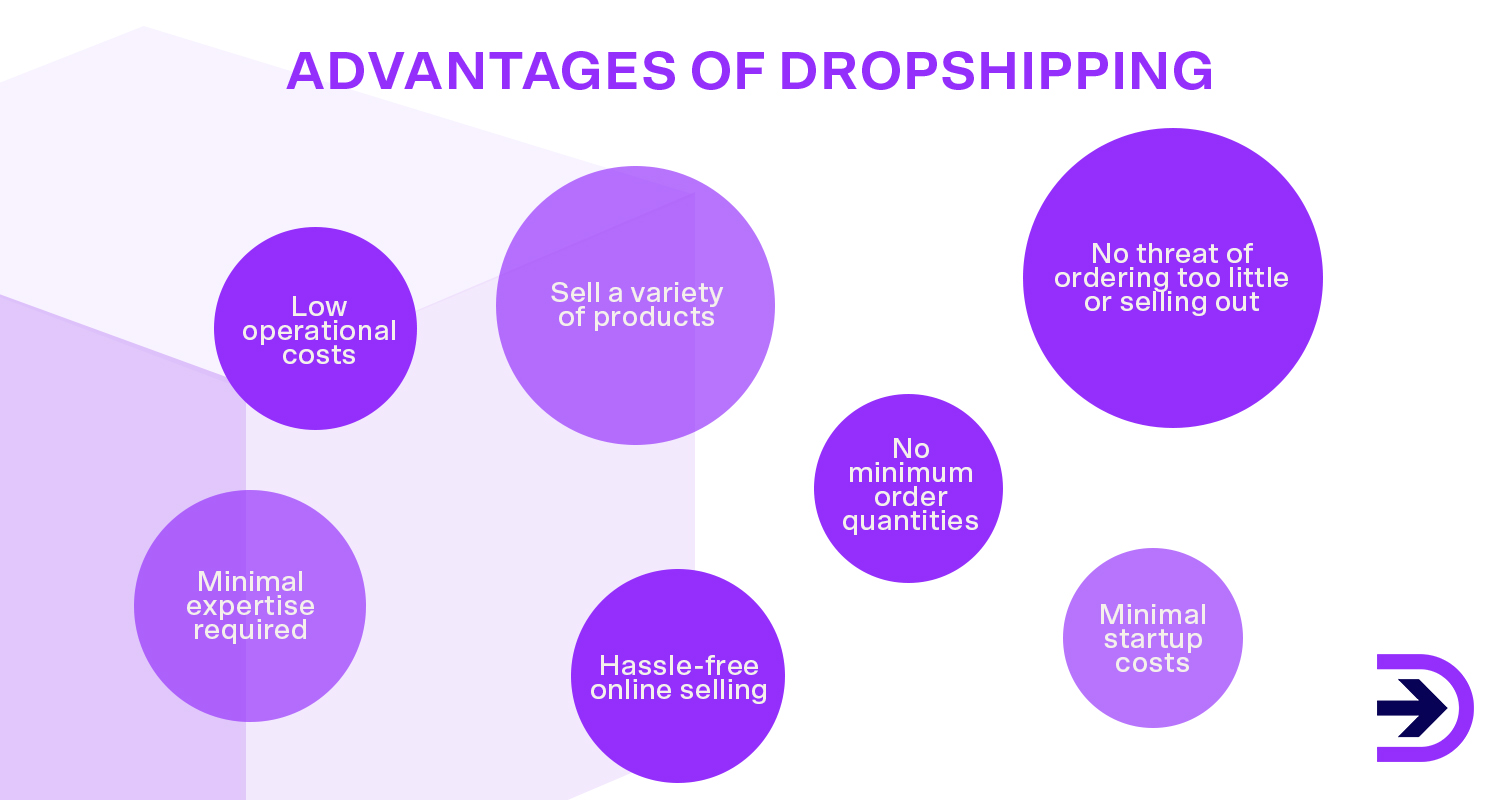
Advantages of dropshipping:
-
No minimum order quantities
-
Low operational costs
-
Minimal startup costs
-
No threat of ordering too little or selling out
-
Minimal expertise required
-
Hassle-free online selling
-
Sell a variety of products
Disadvantages of dropshipping:
-
Increased competition
-
Little to no control over your products
-
Fewer opportunities to build a brand
Dropshipping is best suited for:
-
New entrepreneurs who want to start an online business
-
Sellers who want to sell a variety of products and stay profitable
-
Sellers who lack technical expertise and experience in running an ecommerce business
Determining profitability
Starting an ecommerce business doesn’t require a fortune. The startup costs are usually low because you don’t need a physical store, and even the maintenance and labour expenses are significantly lower. This enables ecommerce business owners to make a good profit. However, selling online isn’t automatically profitable. You’ll have to stay ahead of fierce competition and track your online selling expenses, such as shipping and marketplace costs, to keep your business profitable most of the time.
To determine the profitability of your ecommerce business, you’ll have to assess product demand and profit margin of the items. Gauging customers’ interest in your products and staying aware of costs and revenue can enable you to predict earnings and drive more profit. You can gauge buyers’ interest in your products by identifying -
-
How often do customers search for your products
-
Is the product readily available in the market
-
How many online retailers offer the same product
Knowing about your competitors and customers is crucial to your business. It can provide valuable information related to sales you can make, optimal pricing levels, and other factors that can impact your earnings. If you feel your business’s profitability is low, you can take steps to improve it. For example, if the net sales of a particular audience group is lower than the customer acquisition cost, you can stop focusing on that group to minimise your business expenses. Data gathering is crucial for effective tracking. Using the right data for profitability analysis will enable you to see how profitable your business can be over time.
Summary
Ecommerce is complex and constantly changing, making it quite challenging when you’re just starting your business journey. Starting and running your own ecommerce business is not as easy and straightforward as it seems. Setting up and launching an ecommerce business involves multiple steps and is a lengthy process. When running an ecommerce business unexpected problems may arise that may infuriate your customers, damage your reputation, or cause business loss. At times, you may feel overwhelmed and stressed. The experts at Dropshipzone share three tips to make your ecommerce journey a bit easier.
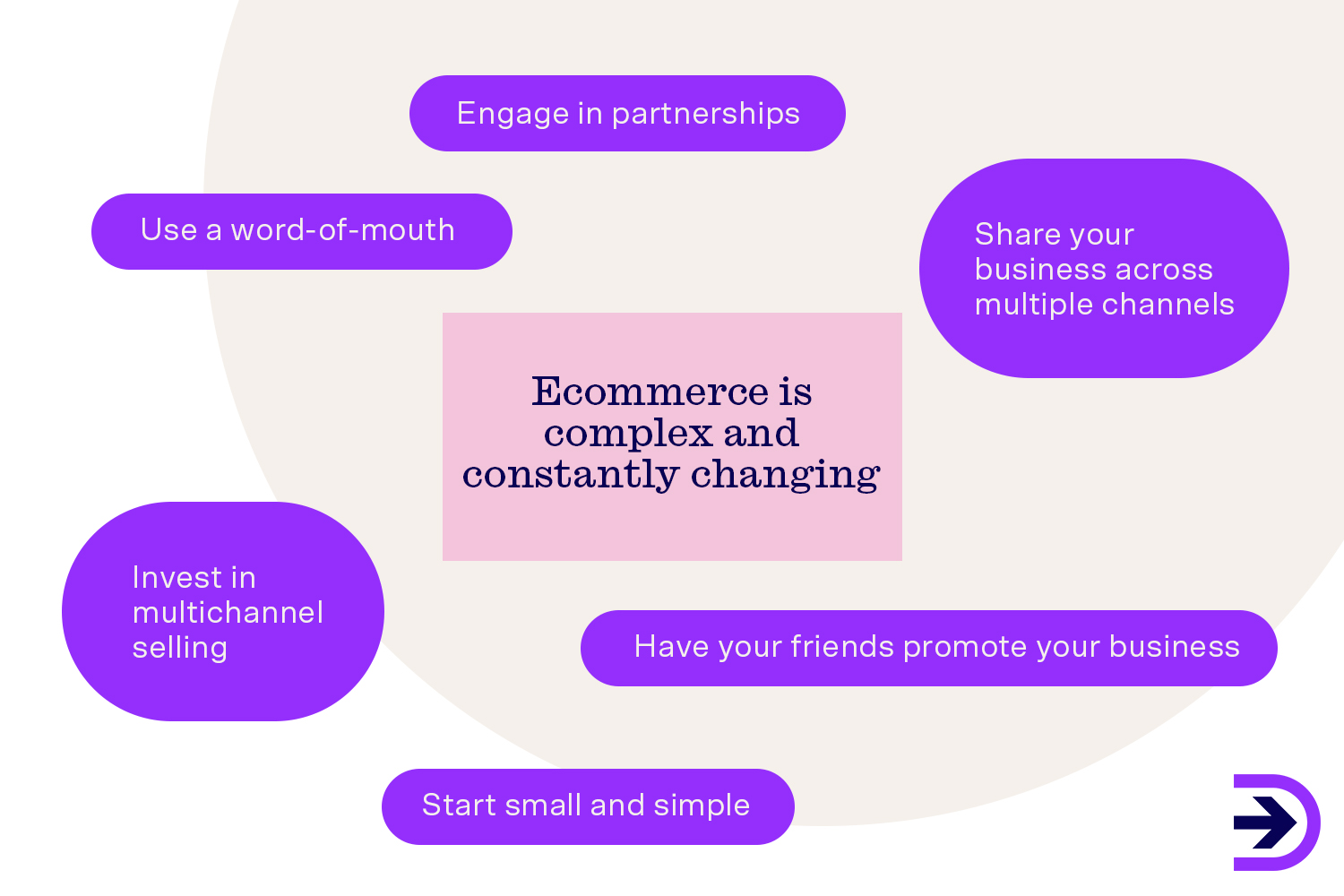
If you need help starting and successfully running your ecommerce business, Dropshipzone is here to help.
Get started with Dropshipzone today.
FAQs
How much does it cost to start your own ecommerce business?
Starting an ecommerce business costs less than a brick-and-mortar store. You don’t require multiple licences and permits, and you don’t need to pay rent for retail space. And if you’re looking to start a dropshipping business, it’ll likely have lower upfront costs than if you were to start an ecommerce business because you don’t have to pay for warehousing, raw materials, managing and storing inventory, and manual labour. You pay for the products only after a customer purchases them.
What skills are required to build and run a successful ecommerce business?

If you're wanting to learn more about dropshipping and ecommerce, head over to our FAQs.
If you’re considering starting an ecommerce business, you should focus on acquiring the following skills.
-
Digital marketing and advertising skills
-
Problem-solving skills
-
Continuous learning to stay on top of ecommerce trends
-
Testing and data analytics skills
-
Money management skills

